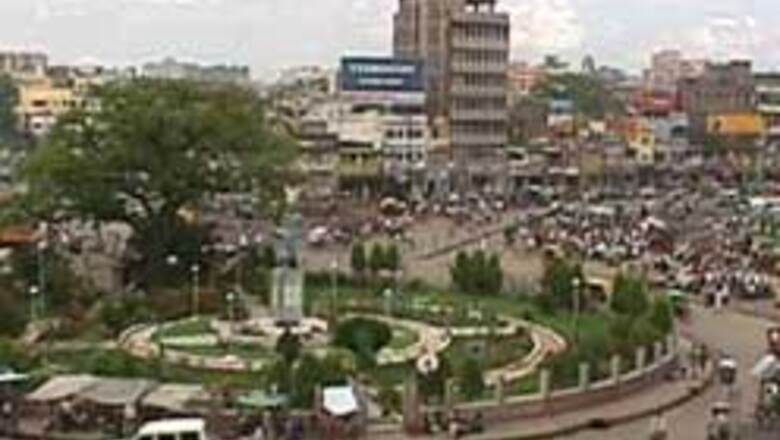
views
New Delhi: With Indian cities becoming epicentres of economic activities for domestic and overseas businesses, the contribution of urban population to GDP is expected to touch 70 per cent by 2011 even as the rural population continues to migrate to metros.
The contribution was 60 per cent in the year 2001. ASSOCHAM, in a study on ''Urban India: Growth, Opportunities and Difficulties,'' has pointed out that metros and large townships in next five years will have ample of infrastructure and adequate input access to industrial renaissance.
This will result for higher urban per capita income, which will rise by minimum of Rs 10,000 per annum and touch Rs 36,000 per annum by 2011.
Currently, the urban per capita income is estimated at Rs 26,000 per annum. The per capita income during 2004-05 has been estimated at Rs 25,500 per annum, which stood at Rs 23,000 per annum in 2003-04.
Commenting on the estimation, ASSOCHAM President Anil K Agarwal said: ''The major cities including metros will offer multifaceted job opportunities to a large number of job seekers and qualified professionals in areas of IT, ITeS, manufacturing, services and biotechnology.''
These cities will be Delhi, Mumbai, Chennai, Haryana, Bangalore, Haryana, Hyderabad, Uttar Pradesh, Kolkata followed by other emerging cities like Kochi, Pune, Ahmedabad, Chandigarh, Dehar Dun and Jaipur.
With almost 300 million Indians living in urban areas, India has the second largest urban population in the world. It comprises about 28 per cent of the total population and accounts for more than 90 per cent of the government revenues.
According to the study, the share of urban population in total population had grown from 25 per cent in 1991 to 27 per cent in 2001 is expected to further increase to about 30 per cent by 2011.
Employment in urban areas registered a growth of around 38 per cent, substantially exceeding the rural employment growth rate of around 16 per cent.
PAGE_BREAK
The study also pointed out that more investments will be required for the growth of urban areas.
''While the Government has set up Jawaharlal Nehru Urban Renewal Mission with Rs 1 lakh crore outlay to cover 60 cities with a million-plus population in the next seven years, an additional investment of Rs 1 lakh crore will be needed for improved infrastructure, housing and sanitation facilities in urban India,'' it said.
In view of the industry body, the annual investment needs for urban water supply; sanitation and roads are estimated at about Rs 28,035 crore during the next ten years.
However, the amount that will be required for urban transport infrastructure investment in cities with population one lakh or more during the next 15-20 years would be of the order of Rs 2,07,000 crore.
ASSOCHAM recommended that there is a need for urban reforms in the sector. The private sector investment for provisions of urban infrastructure cannot take place unless a proper legal and regulatory framework for such investment is created and developed which ensures a full cost plus recovery of such investment.
“This calls for innovative reforms in municipal tax structure and user charges, taking into account poor paying capacity of a sizeable section of urban population,” it said.
Various modes of Private-Public-Partnership (PPP) are being experimented by different urban local bodies in the country. Municipal Bond, Tradable Development Rights, Urban Shelter and Infrastructure Fund, use of Land as a Resource are some of the new techniques that are being applied by the city authorities.
The study paper concludes that in order to crystallise the development of urban infrastructure, though the government has allowed 100 per cent FDIs under automatic route for housing and urban infrastructure, it should take a similar bold decision in other areas so that the flight of foreign capital becomes easier to meet domestic needs.
















Comments
0 comment